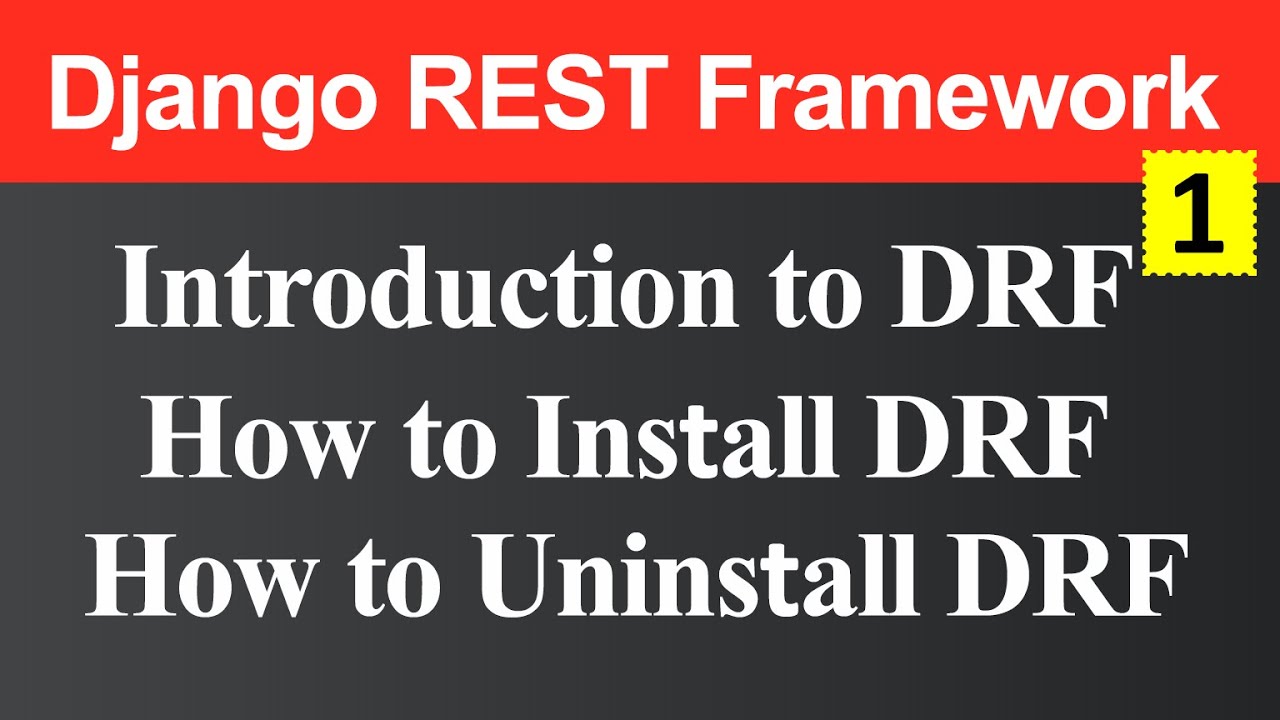🤔 High-Salary Job with this Django Roadmap? | Advanced Django Developer roadmap || Code with SJ
Summary
TLDRIn this tutorial, Shubham guides viewers on how to effectively learn Django by first establishing a strong foundation in Python. He emphasizes the importance of understanding HTML, CSS, and JavaScript for web development. Shubham then outlines the Django learning path, starting with the MTV structure (Models, Views, and Templates), followed by URL and form configurations, and the Django admin panel. For beginners, he suggests mastering CRUD operations and gradually moving to advanced topics like static files, authentication, and deployment. Shubham also encourages aspiring full-stack developers to explore front-end technologies and Django REST framework for API development, concluding with the necessity of testing to ensure robust application development.
Takeaways
- 😀 Start with a strong foundation in Python, as it's the backbone of Django.
- 🌐 Gain basic understanding of HTML, CSS, and JavaScript for web development.
- 💻 Learn about Python environments and how to manage packages and virtual environments.
- 📝 Understand the MTV (Model, View, Template) structure of Django projects.
- 🔍 Focus on learning Views first, as they are akin to Python functions and crucial for business logic.
- 📜 Learn to work with Templates, which involve writing HTML for the front-end UI.
- 🗂️ Grasp the concept of Models, which act as a bridge to the database in Django.
- 🔗 Explore urls.py and forms.py for handling URLs and forms in Django applications.
- 👤 Get acquainted with Django's admin panel for managing superuser accounts.
- 🖼️ Learn to handle static files and media in Django for serving images and other media.
- 🛡️ Understand authentication and authorization for securing Django applications.
- 🚀 For advanced Django development, delve into topics like logging, migrations, custom user models, signals, middlewares, and management commands.
- 🔌 Explore Django Channels for real-time web applications and WebSocket communication.
- 🔗 Learn Django REST framework for creating RESTful APIs and handling API requests.
- 📝 Embrace testing in Django to ensure code reliability and prevent regressions.
Q & A
What is the first thing one should learn to get started with Django?
-The first thing one should learn is Python, as it is the backbone of Django, and it's important to have a clear understanding of Python fundamentals.
Why is it necessary to have knowledge of HTML, CSS, and JavaScript before learning Django?
-HTML, CSS, and JavaScript are necessary because they help in creating the UI, styling it, and adding interactivity, which are essential when writing template code in Django.
What is an environment in Python and why is it important for Django development?
-An environment in Python refers to a setup where you manage packages and dependencies. It's important for Django development because it allows you to install Django and other necessary packages and manage them effectively.
What is the MVT structure in Django and why is it important to learn?
-MVT stands for Model, View, and Template, which is the fundamental structure of Django. It's important to learn because it forms the basis of how Django applications are organized and how they handle data, logic, and presentation.
Why should one start learning Django with Views, according to the script?
-One should start with Views because they are like Python functions and handle the business logic. They are the core of the application's functionality.
What role do Templates play in Django and why are they important to learn?
-Templates in Django are the HTML files that define the UI. They are important to learn because they determine how the front end of the application is displayed to the users.
Why is understanding the Models in Django crucial for web application development?
-Models in Django act as a database connector, defining the data structure and how it's stored. Understanding them is crucial because they form the basis of data handling in web applications.
What is the purpose of learning urls.py in Django?
-urls.py is used to define the URL patterns for the application, mapping URLs to views. Learning it is important for routing and directing user requests to the appropriate views.
Why is forms.py an important topic to understand in Django development?
-forms.py is important because it handles forms in web applications, which are used for user input and data validation, a common requirement in web applications.
What are some advanced topics one should explore after mastering the basics of Django?
-Advanced topics include logging, migrations, customizing the user model, signals, middlewares, management commands, Django REST framework, and testing. These topics are important for deeper understanding and advanced development in Django.
Why is learning Django REST framework beneficial for a Django developer?
-Learning Django REST framework is beneficial as it allows the creation of RESTful APIs, which are essential for front-end and back-end communication and for building scalable applications.
How does the script suggest one becomes an advanced Django developer?
-The script suggests becoming an advanced Django developer by diving deep into concepts like logging, migrations, custom user models, signals, middlewares, management commands, Django channels for real-time communication, and mastering the Django REST framework.
Outlines

此内容仅限付费用户访问。 请升级后访问。
立即升级Mindmap

此内容仅限付费用户访问。 请升级后访问。
立即升级Keywords

此内容仅限付费用户访问。 请升级后访问。
立即升级Highlights

此内容仅限付费用户访问。 请升级后访问。
立即升级Transcripts

此内容仅限付费用户访问。 请升级后访问。
立即升级浏览更多相关视频

How to make a website with Python and Django - BASICS (E01)

Django Rest Framework and How to Install Uninstall Django Rest Framework (Hindi)

Python Bangla Tutorials 11 : Formatted String | Type function

Django in 8 Minutes 🔥

TEKNIK CLUSTERING UNTUK MENGANALISA DATA MAHASISWA

How to become a fullstack Python developer !!! 🔥🔥🔥
5.0 / 5 (0 votes)
